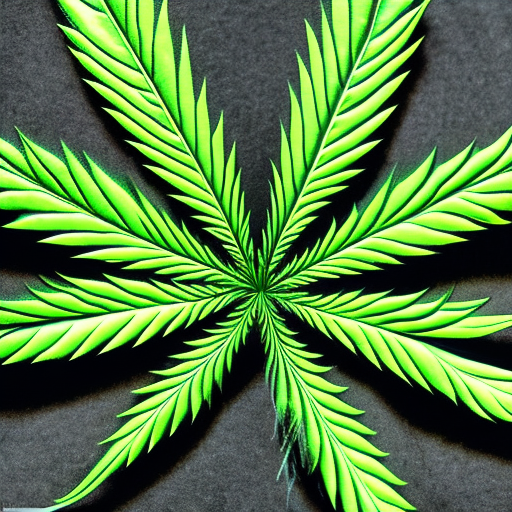
Yo yo yo, it’s your boy Dan and I’m here to talk about some real important stuff: THCA and THC. You might be thinking, what’s the difference? Well, let me tell you, there’s a big ol’ difference between these two cannabinoids that you need to know about.
First things first, did you know that there’s almost no THC in your cannabis plants? Crazy, right? But don’t trip, the potential is there. Raw cannabis isn’t psychoactive in and of itself. It contains high levels of THCA, which only converts into THC via heat and light. So when you’re smoking or cooking with your bud, that’s when the magic happens.
THCA is short for tetrahydrocannabinolic acid. All high-THC strains feature high concentrations of this molecule before undergoing decarboxylation (heating). Before these factors take hold, all of that THC exists as THCA. So basically, if you’re eating a pile of raw cannabis, you won’t get high because of the lack of THC.
But wait, there’s more! THC and THCA are similar in some ways, but dramatically different in others. THCA is non-psychoactive and naturally occurs in raw cannabis. It’s a weak activator of CB1 and CB2 receptors and represents up to 90% of the total THC content of cannabis plants. It may provide soothing and neurological effects.
On the other hand, THC exerts psychoactive effects and is produced through decarboxylation. It’s a stronger activator of the CB1 receptor and synergises with numerous cannabis terpenes including pinene, limonene, caryophyllene, and linalool. THC is associated with several benefits including relaxation, sleep and appetite promotion, and euphoria.
THCA serves as an important biomarker when it comes to cannabis testing. Ambitious breeders looking to sell their flowers to dispensaries need to test their products beforehand. Testing for the level of THCA within a weed sample will give the breeder an accurate picture of how potent their flowers are.
Research on THCA remains preliminary, with most studies being conducted on animals or cells. Until clinical trials emerge, we have to remain sceptical of THCA’s effects on humans. However, the research so far does serve as an indicator of what we can expect.
Some early research suggests that THCA might help to shift a few pounds by driving down fat mass in mice by interfacing with the PPARy receptor. THCA may also help to soothe joints and other parts of the body through its action on PPARy and the CB1 receptor of the endocannabinoid system. Further early research suggests that THCA might help to ease a queasy stomach.
So how do you consume THCA? It needs to be consumed in the absence of excess heat. Pure crystalline extracts are one of the best ways to take the cannabinoid. They can easily be added to cool foods and drinks or mixed with oils and tinctures. Cannabis users also juice raw cannabis flowers to obtain THCA.
The best source of THCA is your own cannabis flowers! These resinous buds are packed with the cannabinoid before you hit them in a joint or bong. Fire up your juicer instead to feel the effects of this molecule. Those lucky enough to live somewhere with a legal recreational cannabis market will also be able to pick up THCA crystals from certain dispensaries.
And there you have it folks, everything you need to know about THCA and THC! Stay lifted my friends!



Ayo, I feel you on that. THCA got its own vibe, but THC hit different when you need that high. Both got their place, ya know? Keep it real, fam.
Yo, I feel you on that THCA and THC break down. It be real important to know how they different. THCA got them health benefits while THC got you high. Gotta know what you lookin for when you smokin. Keep it real fam!